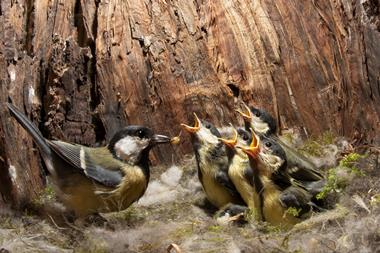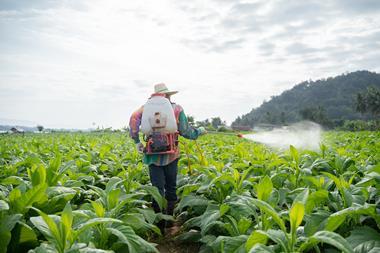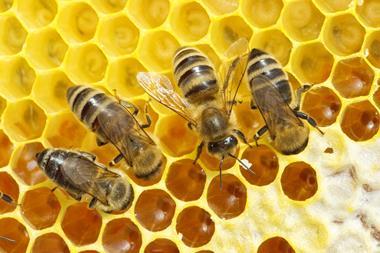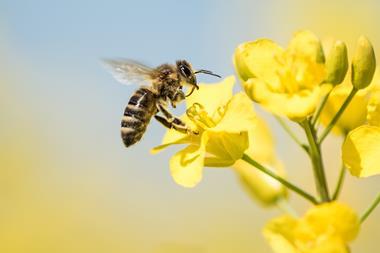A pesticide banned for outdoor use by the EU could be less harmful to bees than had been thought. This is the conclusion of a study that exposed bumblebee colonies to sulfoxaflor, an insecticide approved in the EU in 2015 but banned for outdoor use in April 2022.
The new study, carried out at the University of Reading and Royal Holloway, tested the effects of field-realistic levels of sulfoxaflor in the presence of a common bee parasite, Crithidia bombi, on the buff-tailed bumblebee, Bombus terrestris. The parasite gave the bees an extra challenge, to try to replicate the multiple stressors pollinators often face in the wild.
The finding that sulfoxaflor had no impact on bumblebee colonies or the pollination of bean flowers, enclosed so that only the study bumblebees could visit them, runs counter to comparable studies on neonicotinoids, also carried out at the University of Reading.
‘This changes our understanding of how sulfoxaflor impacts bee reproduction and pollination, and means it is less harmful than the neonicotinoids,’ says Edward Straw, a bee ecologist at Trinity College Dublin who conducted the research jointly with Elena Cini, who was then at the University of Reading. However, he stresses that this only holds true for the conditions that were tested.
Previous studies painted a mixed picture. One study concluded that exposure to this insecticide reduced the number of eggs bumblebees laid, while another on field-based colonies suggested that they were vulnerable to sulfoxaflor when colonies were small, early in the year. Yet another study indicated that the insecticide did not affect bee learning or foraging for food, unlike some neonicotinoids.
But its fate was sealed in the EU, when a European Food Safety Authority assessment in 2020 concluded that outdoor spraying with sulfoxaflor posed a high risk to honeybees and bumblebees. Just like neonicotinoids – banned outdoors by the EU over their effects on pollinators – sulfoxaflor kills target insects after contact or ingestion by binding their nicotinic acetylcholine receptor.
Bees can be exposed to such insecticides when they feed on nectar and pollen from treated crops and flowers in nearby fields. ‘[Sulfoxaflor] is slightly less potent and potentially more likely to break down than the neonicotinoids,’ says Straw.
For now, ‘there isn’t a trend of evidence coming out suggesting that this substance should be re-authorised [by the EU for outdoor use]’, adds Straw. But sulfoxaflor is available to farmers outside Europe, often where neonicotinoids are also allowed.
In the US, the Environmental Protection Agency (EPA) restored sulfoxaflor’s authorisation in 2019, noting a lower risk to pollinators than registered alternatives. Then, in December 2022, a US appeals court ruled that the EPA had violated the Endangered Species Act in registering the pesticide. The EPA announced the results of a final biological evaluation in March and said it would consult with the US Fish and Wildlife Service.
‘The evidence suggests that sulfoxaflor may not be quite as bad as some of the banned neonicotinoids,’ says Elli Leadbeater, bee ecologist at Royal Holloway, who was involved in previous studies on sulfoxaflor and bumblebees but not this one. ‘This is one study with encouraging results, especially for places where sulfoxaflor is currently being used.’ This includes Asia, South America, Africa and the US.
‘This is a very widely used global insecticide but it’s not right to make a judgment on its safety for bees here, because you cannot capture the complexity of ecological systems in one small study,’ she adds.
Straw says it is important to highlight results that reveal insecticides may be less damaging to off-target species than thought. ‘Science must be objective. We can’t just talk about headline-grabbing findings saying X kills bees.’
The story was updated on 22 December 2023 to make clear that Elena Cini contributed equally to the research.
References
EA Straw et al, Sci. Rep., 2023, DOI: 10.1038/s41598-023-43215-6

















No comments yet